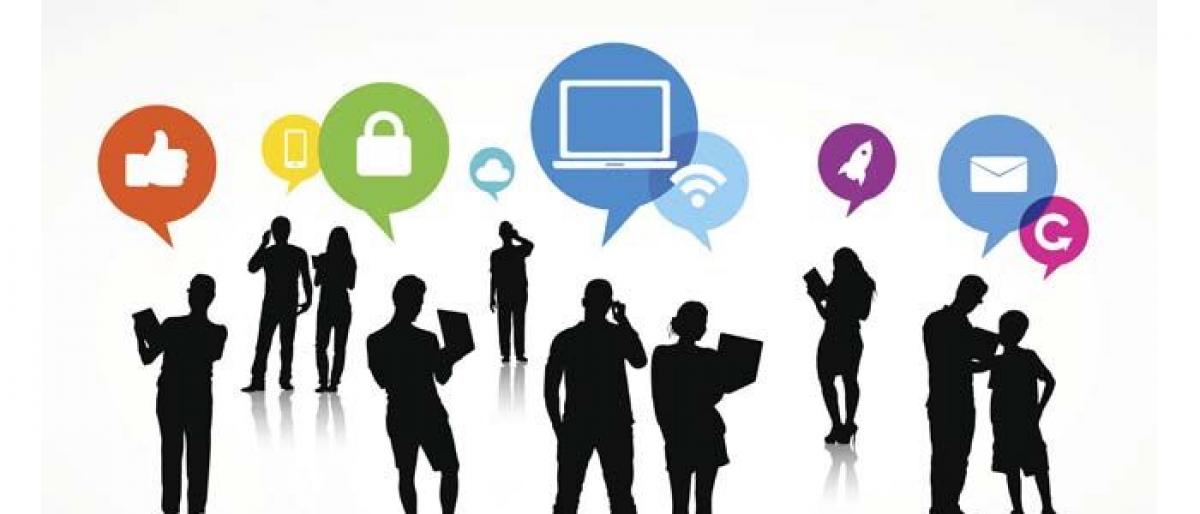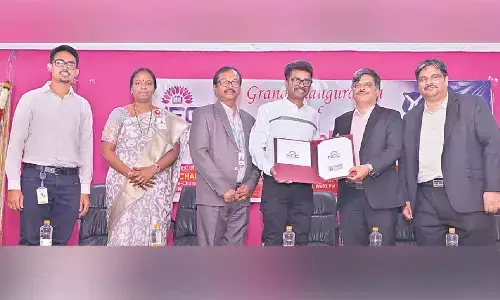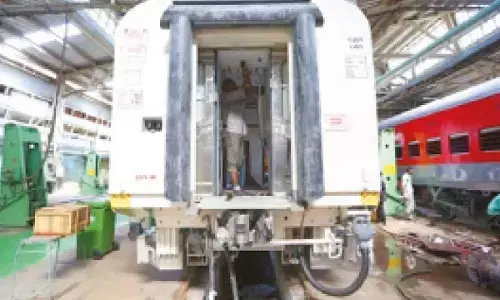Election campaign: Then and now

Change is inevitable, more so in a field like politics where the situation is always considered to be dynamicIn late sixties, the emphasis on election campaign used to be more on personal contact The contestants big and small, those who represented the major parties like the Jana Sangh, the Congress,
Change is inevitable, more so in a field like politics where the situation is always considered to be dynamic. In late sixties, the emphasis on election campaign used to be more on personal contact. The contestants big and small, those who represented the major parties like the Jana Sangh, the Congress, the CPI, the CPM and even independents used to go from door to door, distribute pamphlets explaining what they or their party would do if voted to power, distribute party flags made of paper and badges made of plastic to children, address each member of the family with folded hands and appeal for their vote and support.
The use of campaign vehicles used to be there but more by national parties like the Jana Sangh and the Congress and, compared to modern times, the number of vehicles were very few. Only the major parties used to advertise in newspapers. The emphasis used to be on giving different slogans to attract the attention of voters. A lot of discussion used to take place among people in each locality about the promises made by each contesting candidate and the performance of the outgoing candidate. As far as sloganeering is considered, the Jana Sangh used to come up with novel, creative and catchy slogans compared to the Congress. It is a different matter that their victory in elections was never big.
This is one thing that has not changed till date. Every election season, newspapers, electronic media and social media are full of slogans. They still believe that slogans will help the leaders to send their messages across to voters. But then, these slogans have both positive and negative impact. For example, one small slogan, “Yes We Can,” by Barrack Obama during his presidential elections in 2008 in US had worked wonders. If that kind of positive attitude is adopted there is nothing wrong in sloganeering. But unfortunately, in India which has diverse political culture, sloganeering is being used not to unite people but more to create wedge between people in the name of caste, religion and language.
About three decades ago, slogans used to provide enthusiasm among voters, gauge their mood. Even the first Prime Minister Jawaharlal Nehru who was known more for speeches than slogans, coined the slogan ‘Hindi-Chini Bhai-Bhai’ in the early 1950s. This backfired as relations between Delhi and Beijing deteriorated sharply as a result of border disputes, eventually leading to a full-blown war in 1962.
India was locked in a war with Pakistan in 1965 and there was a severe food shortage. The slogan given by Nehru’s successor Lala Bahadur Shastri ‘Jai Jawan, Jai Kisan’ boosted the nation's confidence at a time of crisis and aided the Congress’ success in the polls and continues to be the most memorable slogan even today. In fact, it is considered to be the best slogan since 1947.
Later during Indira Gandhi’s regime, the slogan of Garibi Hatao had become a big hit and it helped her win over the farmers and weaker sections that India's economy was in a bad shape and the message brought hope to the poor resulting in landslide victory. In 1996, when Atal Behari Vajpayee was the face of BJP, the saffron party came up with the slogan ‘Sabko Dekha Bari Bari, Abki Bari Atal Bihari.’
But the most famous slogan which related directly to a political leader was created by a Congress sycophant Dev Kant Baruah who said ‘Indira is India and India is Indira’ in the mid-1970s. Coming up with such a slogan when the country was in midst of Emergency and when people were seething with anger led to never before seen debacle for the Congress party. Even Indira Gandhi lost elections.
However, by 2004, all political parties have started hiring professional firms to devise slogans and run campaigns. The BJP came up with its much-publicised slogan ‘India Shining.’ This was effectively countered by the Congress which said ‘Aam Aadmi Ko Kya Mila’. Opposition parties alleged that the BJP had spent around Rs 60 crore for the blurb which according to a private TV monitoring agency was aired over 9,000 times. The slogan failed to help the BJP. Despite the BJPs’ claim that the economy was performing fairly well, people felt otherwise and voted the BJP out and elected the Congress party.
We are now into an age of high-end technology. We do not see as much of battle for ballot on tarred roads and dusty streets. In place of campaign, vehicles like Chaitanya Ratham which was considered to be a new concept in elections, leaders are now using helicopters to address meeting across the length and breadth of the country. This helps them in covering more constituencies in shorter time. While that is the positive side of it, this has led to increase in the poll expenses and ultimately the burden falls on the honest tax payer.
The emergence of social media has made the poll battle a virtual battle waged on cyber space. All kinds of campaign can be found on Twitter, Youtube and Facebook. While the political parties and leaders, particularly the tech savvy ones, are using it for instant propaganda to reach out to the voters. All parties are posting the speeches of important leaders, sometimes giving live streaming and are providing regular updates.
The social media has the potential to reach out to over 70 million youth who are below 25 years of age. According to statistics available, around 93 million Indians are on Facebook and 33 million on Twitter. With the market getting flooded with smart phones with advanced features, the youth are making best use of the technology. This fad is fast catching up with the senior citizens as well. It is said that Prime Minister Narendra Modi has maximum number of followers on Twitter. Even the former Prime Minister Manmohan Singh has a following of over one million.
Though it would be too early to say as to what extent the social media would play the role of game changer, it can definitely impact the opinion of voters particularly the young voters to some extent. While this is the positive side of it, unfortunately the tendency in India is that all such potential weapons are used for wrong purposes.
Political campaigns are now influenced by every story, whether true or not, that gets spread around social media. It is getting more and more difficult to separate actual news from fake news online. Social media makes this distinction especially confusing. The constant stream of memes, links and rumours about political leaders and candidates is a mixture of truth, lies, satire and speculation.
If we take the politics of Andhra Pradesh and Telangana, there is growing tendency to use the social media to post all kinds of unsubstantiated allegations against rivals. There is more of intolerance and the language is in its worst form. While leaders are using never before kind of epithets at public meetings, the activists on social media are adding more masala to it and are putting all sane persons to shame.
Politicians should embrace the opportunities that social media brings as a valuable source of information and use it to manage their own campaigns so that it can even influence the reluctant voters to go to polling booths to exercise their franchise.


















